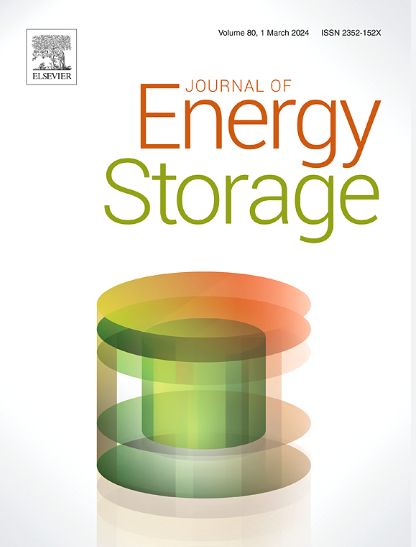Boosting the performance of alkaline Al-air batteries by interfacial reconstruction via N-doped carbon quantum dots
IF 8.9
2区 工程技术
Q1 ENERGY & FUELS
引用次数: 0
Abstract
Al-air batteries (AABs) have garnered attention as an innovative energy source with remarkable performance. Unfortunately, the self-corrosion of Al anodes in alkaline electrolytes impedes its commercialization. This study presents N-doped carbon quantum dots (N-CQDs), synthesized via the hydrothermal method, as electrolyte additives in a 4 M NaOH solution, owing to their quantum size, exceptional dispersion, and polar surface functional groups, which facilitate corrosion inhibition and interfacial stabilization. The influence of varying concentrations of N-CQDs on the self-corrosion of Al and the discharge characteristics of AABs was investigated. The reconstruction of Al-electrolyte interface was explored using electrochemical procedures, hydrogen evolution tests, X-ray photoelectron spectroscopy (XPS), atomic force microscopy (AFM), scanning electron microscopy (SEM), and molecular simulation methods. Our results indicated that at a concentration of 150 mg/L of the N-CQDs inhibitor, the inhibition efficiency reaches 68.4 %. Concurrently, the anode utilization improves from 41.4 % to 85.0 %, the capacity density escalates from 1234.6 to 2531.6 mAh g−1, and the energy density increases from 1540.2 to 3367.0 Wh kg−1. This concept of a dynamic monolayer protective interface presents an alluring avenue for stable Al anodes, as well as an effective strategy to advance the practical implementations of AABs.
氮掺杂碳量子点界面重构提高碱性铝空气电池性能
空气电池(AABs)作为一种性能优异的新型能源备受关注。不幸的是,铝阳极在碱性电解质中的自腐蚀阻碍了其商业化。本研究通过水热法合成n掺杂碳量子点(N-CQDs),作为4 M NaOH溶液中的电解质添加剂,由于其量子大小,优异的分散性和极性表面官能团,有利于缓蚀和界面稳定。研究了不同浓度的N-CQDs对Al自腐蚀和AABs放电特性的影响。利用电化学方法、析氢实验、x射线光电子能谱(XPS)、原子力显微镜(AFM)、扫描电子显微镜(SEM)和分子模拟等方法对al -电解质界面的重构进行了探讨。结果表明,当N-CQDs抑制剂浓度为150 mg/L时,其抑菌率可达68.4%。阳极利用率从41.4%提高到85.0%,容量密度从1234.6 mAh g−1提高到2531.6 mAh g−1,能量密度从1540.2 Wh kg−1提高到3367.0 Wh kg−1。这种动态单层保护界面的概念为稳定的Al阳极提供了一条诱人的途径,也是推进AABs实际实施的有效策略。
本文章由计算机程序翻译,如有差异,请以英文原文为准。
求助全文
约1分钟内获得全文
求助全文
来源期刊

Journal of energy storage
Energy-Renewable Energy, Sustainability and the Environment
CiteScore
11.80
自引率
24.50%
发文量
2262
审稿时长
69 days
期刊介绍:
Journal of energy storage focusses on all aspects of energy storage, in particular systems integration, electric grid integration, modelling and analysis, novel energy storage technologies, sizing and management strategies, business models for operation of storage systems and energy storage developments worldwide.
 求助内容:
求助内容: 应助结果提醒方式:
应助结果提醒方式:


